INTRODUCTION

If you don't happen to be among the few who've already gotten themselves a system based on the latest AMD X570/S and Intel Z590 motherboards and you're looking to get your hands on a very fast M.2 NVMe SSD then clearly, you're in the market for a PCIe Gen3x4 model. For good or bad unlike PCIe Gen4 models (very few currently in the market) Gen3 models count in the hundreds and so it's much harder to find the one which most fits your requirements. SK hynix may not be the first name to come to mind when it comes to SSDs but considering that their DRAM and NAND flash modules can be found in just about anything (from graphics cards and RAM kits to yes SSDs) they have to be doing something right. Well since they recently launched their very own P31 Gold series of M.2 NVMe PCIe Gen3x4 SSDs i decided to see for myself just what the 1TB variant has to offer.
SK hynix Inc., headquartered in Korea, is the world’s top tier semiconductor supplier offering Dynamic Random Access Memory chips (“DRAM”), Flash memory chips (“NAND Flash”) and CMOS Image Sensors (“CIS”) for a wide range of distinguished customers globally. The Company’s shares are traded on the Korea Exchange, and the Global Depository shares are listed on the Luxemburg Stock Exchange. Further information about SK hynix is available at www.skhynix.com, news.skhynix.com.
The P31 Gold series of M.2 NVMe PCIe Gen3x4 SSDs is currently available in 500GB/1TB/2TB capacities (the 2TB variant was announced a week or so ago) and is based on SK hynix's very own ARM 4-channel CEPHEUS PCIe Gen3x4 NVMe v1.3 NAND flash controller paired with their 6th gen 128-Layer 3D TLC NAND flash and a 1GB LPDDR4 2133MHz DRAM module (512MB for the 500GB model and 2GB for the 2TB model). Although not much is known for the specifications of the CEPHEUS it does support technologies like Low-Density Parity-Check (LDPC), SMART, secure erase, TRIM, device sleep and SK hynix’s HYPERWRITE hybrid SLC cache which basically includes two different SLC cache types (fast and slow dynamic) for optimal write results. Unfortunately, this also means that the drive doesn't support AES 256-bit hardware encryption although this is not something the majority of home users would ever need. Finally, SK hynix covers the entire P31 Gold line with a 5-year limited warranty and as for endurance numbers they report a TBW of 500 for the 500GB model, 750 for the 1TB model and 1500 for the 2TB model.
SPECIFICATIONS AND FEATURES

PACKAGING AND CONTENTS
SK hynix uses a small cardboard box to ship their P31 Gold series which at the front has something like a yellow diamond right over the included capacity.
Several certifications are printed at the rear of the box right under a product drawing.
The user instructions and terms and conditions papers are bundled along with the P31 Gold M.2 NVMe SSD.
THE P31 GOLD 1TB
The P31 Gold is a single side M.2 NVMe Gen3x4 model that follows the typical 2280 size/form factor (22mm in width and 80mm in length).


 Under the top sticker we find the CEPHEUS NAND flash controller, 1GB LPDDR4 DRAM module and two 128-Layer 3D TLC NAND flash modules (512GB in capacity each).
Under the top sticker we find the CEPHEUS NAND flash controller, 1GB LPDDR4 DRAM module and two 128-Layer 3D TLC NAND flash modules (512GB in capacity each).
On the other side of the PCB, we find a sticker with the drives part and serial numbers and barcodes and of course its capacity and numerous certifications.
SK HYNIX SOFTWARE
From the official SK hynix website you can download two pieces of software, the migration utility (by Macrium) and their drive manager.
The migration utility is Windows based and as expected it allows the end user to transfer all drive contents to a new P31 Gold SSD.
On the other hand, the drive manager is basically a monitoring utility which allows the end user to check the state of the drive (temperatures/remaining life/condition), check the SMART page, see which features are enabled, check the details of the drive and perform firmware updates (you will need to download the firmware from their support page first).
TEST BED
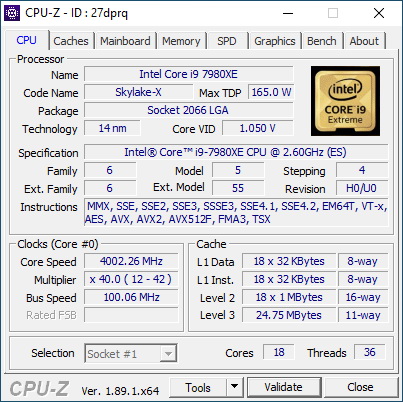

TESTING METHODOLOGY
After over 12 years of testing solid state drives, i’ve concluded that it's almost impossible for any single benchmark suite to accurately measure their performance and that's why in certain benchmark suites we see amazing read/write performance numbers with some drives while in others things are quite different. The reason behind this is that some benchmarking suites are configured to read and write random chunks of data while others read and write constant (sequential) ones. So that's why i always use a very wide selection of benchmarking suites including AIDA64, HD Tach RW, HD Tune Pro, Crystal Disk Mark, Sisoftware Sandra Pro, AS SSD, IOmeter and ATTO. To get the most accurate results each test gets repeated a total of 6 times with the average performance numbers recorded into our charts*. Also, as of February 25th 2015 our results will also include the Storage Networking Industry Association’s (SNIA) IOMeter tests. These tests include a 12 Hour write test used to “simulate” performance degradation over time and a mixed workload test which basically shows what you can expect when using an SSD continuously for roughly two hours. Unfortunately, due to the time required for these tests we repeat them a total of 3 times and not 6 as the above.
Many people have made inquiries about our charts in the past so once again please do keep in mind that the Charts have the average performance numbers of each drive recorded and not the peak (highest) ones. Also, although every single one of these programs can help potential buyers choose the right drive for their needs you should also remember that from any kind of benchmark up to real world usage the gap is not small (and usually most differences will go unnoticed by most people). All tests were performed in a fresh Windows 10 Pro x64 installation complete with every update up to the date of this review.
* Since November 2018 the SSD comparison charts have been divided to 2.5” and M.2 models to reduce their growing size.
** Unless stated otherwise the Ryzen 9 3950x based Test Rig used for M.2 Gen 4 SSD reviews is not located in the lab.
*** As of January 2021 for Gen 3x4 models I’ll be using the Core i9-7980XE test rig (after numerous tests the up to 6% difference in read & write performance compared to the i7-6700 system simply wasn’t enough to justify having an extra test rig around).
TEST RESULTS - AIDA64 / ATTO


TEST RESULTS - HD TACH RW / HD TUNE PRO


TEST RESULTS - SISOFTWARE SANDRA PRO / CRYSTAL DISK MARK


TEST RESULTS - AS SSD / IOMETER


TEST RESULTS - IOMETER SNIA

CONCLUSION
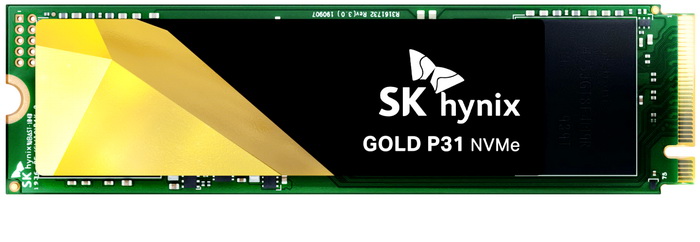 The P31 Gold series is the very first SSD to feature 128-Layer 3D TLC NAND flash and that’s good not only in terms of cost/pricing but also performance and available storage capacity. Now granted the P31 Gold is not the fastest Gen3X4 SSD in the charts but considering that it’s based on a 4-channel controller whereas all the faster models (slightly faster) are based on 8-channel controllers speaks volumes about this specific drive and what we can expect in the future by adding even more layers (for example 176-layer NAND is just around the corner). The lack of AES 256-bit hardware encryption support may be an issue for office use but I don’t see it becoming a problem for home use. A far more serious issue was that the drive was only available in 500GB and 1TB capacities but since SK hynix recently announced a 2TB model things have improved (still I do believe that 4TB models should become more widely available).
The P31 Gold series is the very first SSD to feature 128-Layer 3D TLC NAND flash and that’s good not only in terms of cost/pricing but also performance and available storage capacity. Now granted the P31 Gold is not the fastest Gen3X4 SSD in the charts but considering that it’s based on a 4-channel controller whereas all the faster models (slightly faster) are based on 8-channel controllers speaks volumes about this specific drive and what we can expect in the future by adding even more layers (for example 176-layer NAND is just around the corner). The lack of AES 256-bit hardware encryption support may be an issue for office use but I don’t see it becoming a problem for home use. A far more serious issue was that the drive was only available in 500GB and 1TB capacities but since SK hynix recently announced a 2TB model things have improved (still I do believe that 4TB models should become more widely available).
At the time of this review the P31 Gold 1TB M.2 NVMe PCIe Gen3x4 SSD by SK hynix retails for just USD134.99 inside the USA (Amazon.com) and for 150.24Euros inside the EU (Amazon.de) meaning exactly what you’d expect for such a model. Again, this may not be quite the fastest Gen3x4 SSD in the market today but it is amongst the fastest ones and thanks to its endurance numbers (750TBW for the 1TB model is not bad at all) it does offer very good bang for your buck which is also why it gets the Golden Award.

PROS
- Very Good Overall Performance (Especially For A 4 Channel Controller)
- Endurance Numbers (750 TBW)
- First SSD With 128 Layer NAND Flash
- 5 Year Limited Warranty
- Price (For Some)
CONS
- Thermal Throttling (12 Hour SNIA Test)

 O-Sense
O-Sense





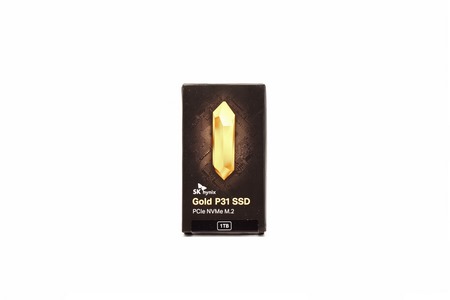




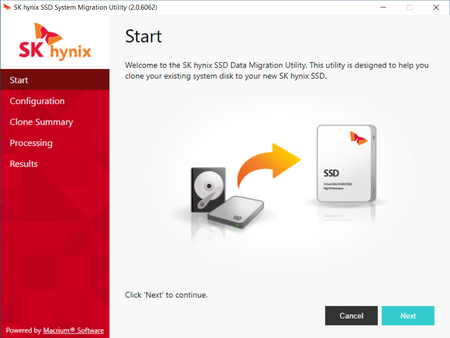


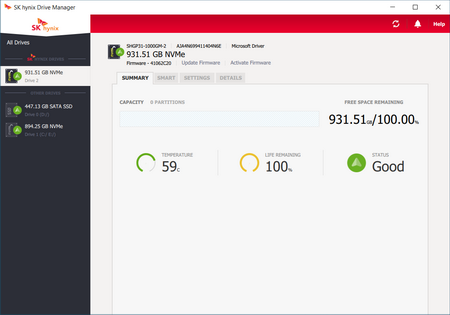


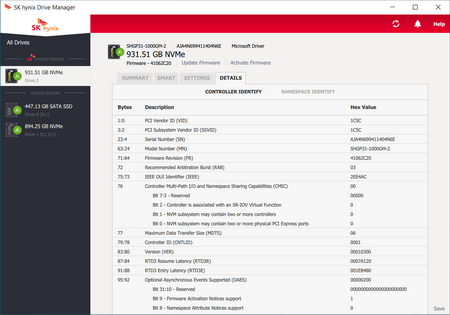




.png)

